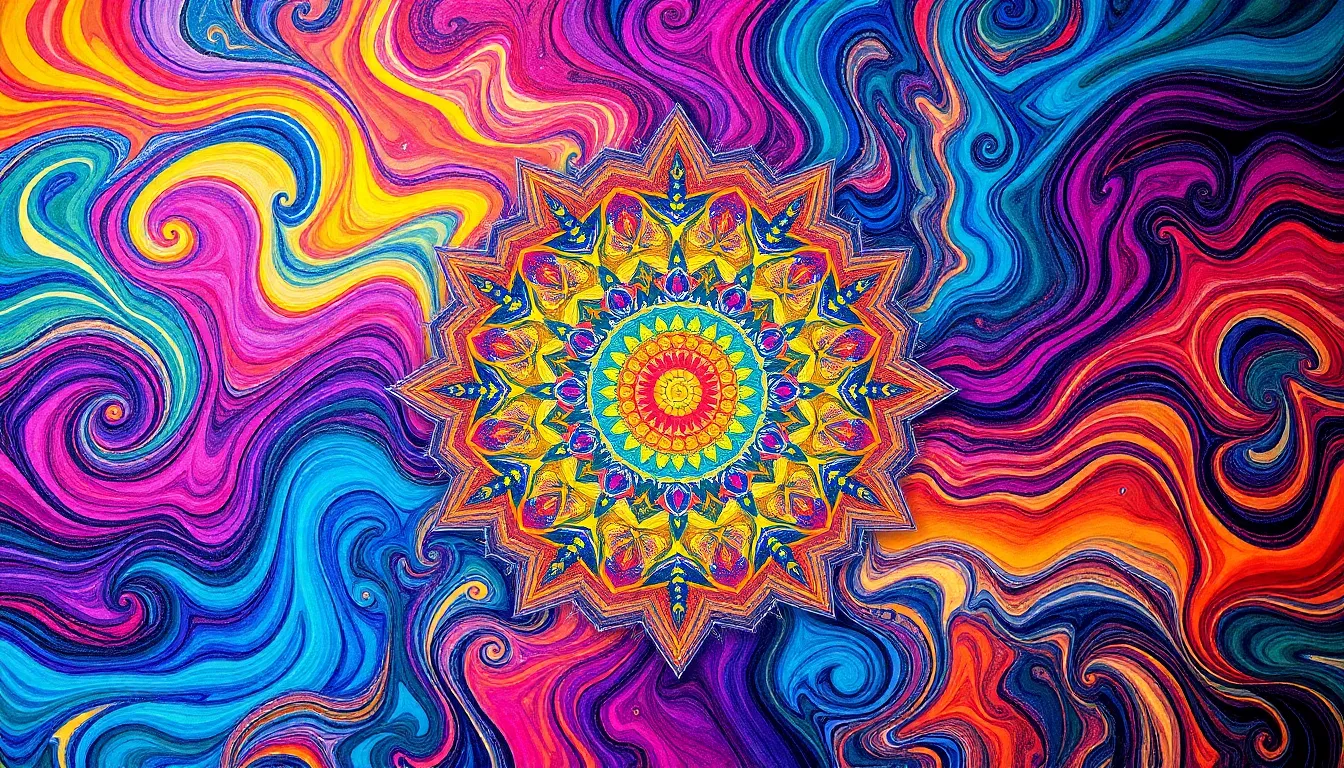The Best Fluffy Pancakes recipe you will fall in love with. Full of tips and tricks to help you make the best pancakes.

Trippy Painting: Dive Into a Mind-Bending World of Color and Creativity
In a world where reality often feels a bit too mundane, trippy painting invites viewers to escape into a vibrant realm of imagination. These mesmerizing artworks transform ordinary perceptions into extraordinary experiences, blending colors and shapes in ways that tickle the brain and ignite the senses. It’s like a rollercoaster ride for the eyes—without the long lines and questionable snacks.
What Is Trippy Painting?
Trippy painting represents a distinct style of art characterized by vibrant colors, intricate patterns, and surreal imagery. Artists utilize bold hues and geometric shapes to evoke feelings of wonder and exploration. Many pieces aim to induce altered states of perception, facilitating a journey beyond conventional reality.
Influences from psychedelic culture are evident in trippy artworks. These influences stem from the 1960s, where the movement’s essence embraced freedom, creativity, and self-exploration. Artists like Alex Grey and Salvador Dalí exemplify the essence of trippy painting, merging intricate details with dreamlike concepts.
The experience of viewing trippy paintings often mimics sensory adventures. Colors pulsate and swirl, engaging viewers in an immersive visual journey. Repetition of motifs such as fractals and spirals generates a sense of endlessness, drawing the eye inward.
Trippy painting appeals to diverse audiences, attracting those interested in art, spirituality, and psychology. Many find peace and introspection when engaging with these artworks. Critical discussions around trippy painting often revolve around its impact on emotional states and cognitive processes.
Trippy painting transcends traditional art forms. Through its combination of vivid colors and complex patterns, it creates a unique sensory experience. This style invites viewers into an expanded awareness, encouraging them to appreciate the beauty in the extraordinary.
The History of Trippy Painting

Trippy painting has roots tracing back to various artistic movements. These artworks invite viewers to explore perception through vibrant colors and intricate patterns.
Early Influences
Psychedelic art emerged prominently in the 1960s, aligning with the counterculture movement. Artists like Victor Moscoso and Peter Max utilized bold colors and surreal themes to reflect the zeitgeist. The visuals resonated with the experiences of drug culture and expanded consciousness. In addition, traditional art forms, including Eastern philosophy and spiritual symbols, influenced the aesthetic. Artists integrated mandalas and fractal designs to promote mindfulness and introspection.
Modern Interpretations
Present-day artists continue to evolve trippy painting, blending technology with creativity. Digital mediums allow for dynamic artworks that pulse and shift, enhancing the sensory experience. Notable artists like Alex Grey emphasize themes of interconnectedness and spirituality. Current exhibitions often highlight immersive installations that draw viewers into a captivating journey. This evolution reflects a broader conversation about art’s role in exploring human consciousness and emotional states. An expanding audience appreciates these modern interpretations, embracing the fusion of art and technology.
Techniques Used in Trippy Painting
Trippy painting incorporates several key techniques that enhance its unique visual appeal and immersive experience.
Color Theory
Color selection plays a critical role in trippy painting. Vibrant hues captivate viewers, drawing them into the artwork’s emotional landscape. Contrasting colors create dynamic interactions, sparking energy and excitement. Artists often utilize complementary color schemes to highlight focal points, guiding the viewer’s eye. This strategic application of color elicits specific emotions, whether joy, serenity, or curiosity. Shades of neon or pastel may evoke a psychedelic vibe, connecting to the genre’s roots in the 1960s. Utilizing color theory effectively, artists amplify the sensory journey, ensuring each painting resonates deeply.
Layering and Textures
Layering techniques contribute significantly to the richness of trippy painting. Artists apply multiple layers of paint to create depth, enhancing the visual complexity of the artwork. Textures can vary from smooth areas to rough, tactile surfaces, inviting touch and exploration. Through varied brush strokes, artists achieve movement, making the painting feel alive. Combining matte and glossy finishes provides an engaging contrast, drawing attention to intricate details. The use of layering also promotes rhythmic patterns that lead the viewer into an almost hypnotic experience. This textural interplay enriches each piece, transforming it into a multi-dimensional encounter.
Famous Trippy Painters
Trippy painting features an array of influential artists whose works captivate viewers. Many of these painters significantly shaped the genre and continue to inspire through their unique styles.
Notable Works
Alex Grey’s “The Sacred Mirrors” series stands as a landmark in trippy painting, blending spirituality and healing through intricate depictions of the human body. Salvador Dalí’s “The Persistence of Memory” mesmerizes with its surreal melting clocks, challenging perceptions of time. Peter Max’s vibrant images, including the iconic “Love,” capture the essence of the psychedelic movement with bursts of color and whimsical forms. Victor Moscoso’s concert posters showcase swirling patterns and bold colors, reflecting the energy of the 1960s counterculture. These artists contribute to the rich tapestry of trippy art.
Artistic Movements
Psychedelic art emerged prominently in the 1960s, heavily influenced by the counterculture movement. Artists drew inspiration from Eastern philosophies and spiritual motifs, utilizing mandalas and fractals to promote mindfulness and introspection. Surrealism played a fundamental role, with its emphasis on dreamlike imagery and the unconscious mind. Some artists incorporated elements of Op Art, exploring optical illusions that engage the viewer’s perception. Each movement layers upon the other, forging a diverse framework for contemporary trippy painting.
Conclusion
Trippy painting serves as a vibrant gateway to the extraordinary. It captivates viewers with its bold colors and intricate designs, inviting them to embark on a sensory adventure. The evolution of this art form reflects a rich tapestry of cultural influences and innovative techniques, showcasing how artists continue to push boundaries.
As contemporary creators blend technology with traditional methods, trippy painting remains relevant and engaging. This genre not only stimulates visual appreciation but also fosters deeper connections to themes of spirituality and consciousness. Ultimately, trippy painting encourages exploration and invites everyone to embrace the beauty found in the extraordinary.
